5 Easy Yoga Poses to Strengthen Your Hips
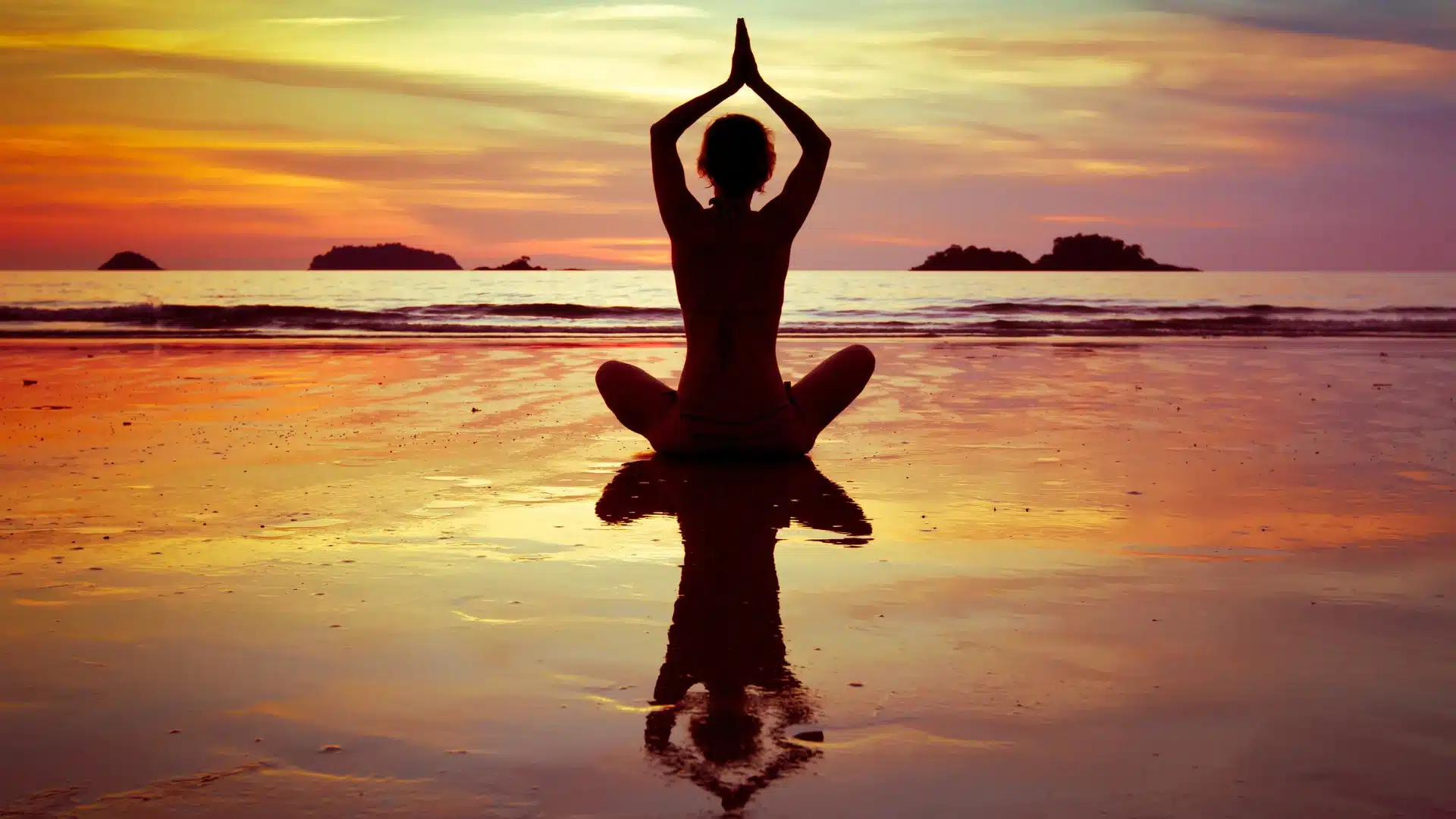
Overview
Hip discomfort is a common issue that can affect your ability to move freely. But today, we will discuss the tried-and-tested simple yoga poses. Whether it’s caused by sitting for too long, lack of movement, or tight muscles, hip stiffness can interfere with daily life.
Yoga offers a gentle, easy way to release tension and it enhances your overall flexibility, which leads to healthier hips. With regular practice, these poses can bring relief and help you move with greater ease.
Preparing for a Yoga Session
Before starting yoga, it’s important to prepare your body. A gentle warm-up will increase blood flow to your hips and loosen the surrounding muscles. Try simple movements like seated forward bends or cat-cow stretches.
You might also consider using tools like yoga blocks or straps to make the poses more accessible and comfortable, especially if you’re new to yoga. Now let’s begin!
1. Child’s Pose (Balasana)
The child’s pose is one of everyone’s favorite and simple, yet effective poses for relieving hip tension.
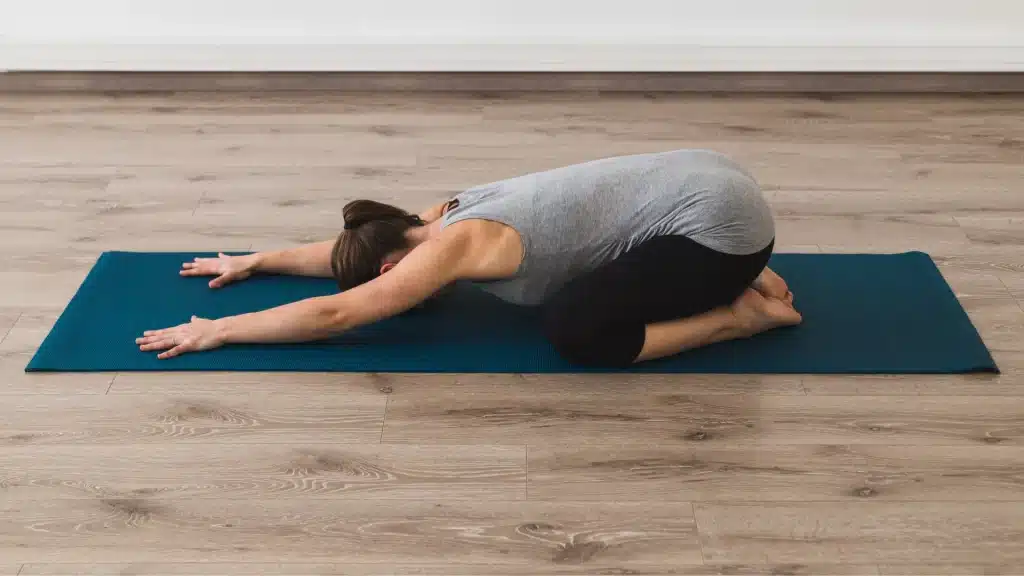
Steps:
- Start on your hands and knees.
- Now, as seen in the above image, let your knees be wide.
- Sit your hips back toward your heels and stretch your arms forward.
- Rest your forehead on the mat and breathe deeply.
This pose gently stretches the hips, lower back, and inner thighs, making it a great choice to start your practice.
2. Butterfly Pose (Baddha Konasana)
This pose specifically targets your inner thighs, and it opens your hips.
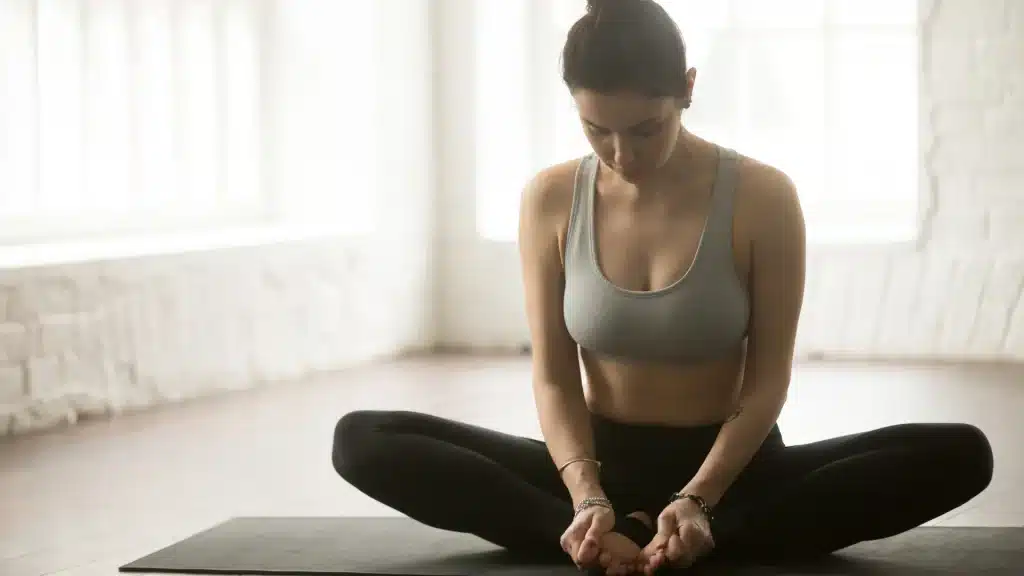
Steps:
- First, sit on the floor with your spinal cord straight.
- Let the soles together and try to make your knees drop out.
- Hold your feet with your hands and gently push your knees toward the floor.
This pose is ideal for loosening tight inner thigh muscles and improving hip flexibility.
3. Pigeon Pose (Eka Pada Rajakapotasana)
Pigeon Pose is excellent for stretching the deep hip muscles and hip flexors.
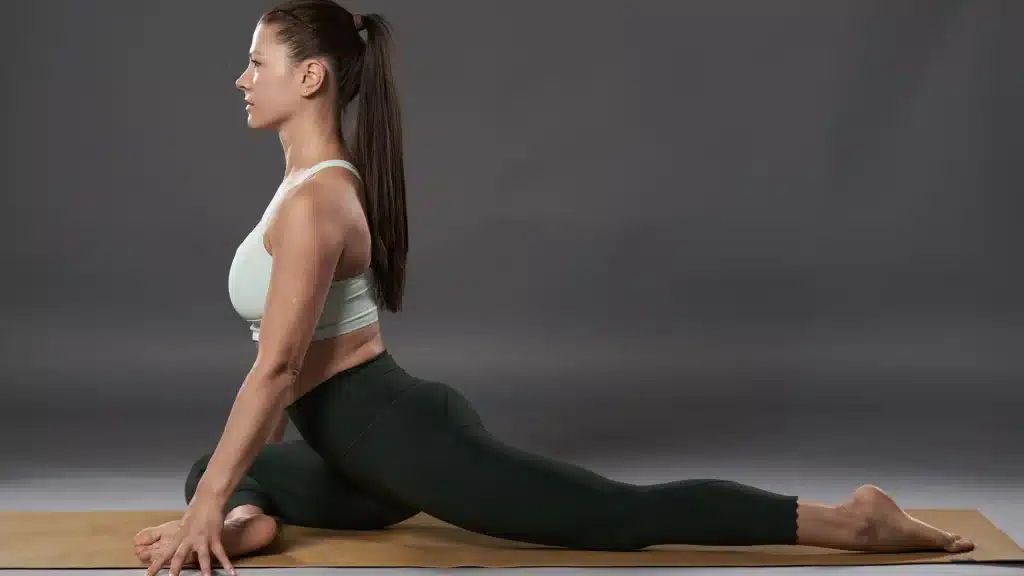
Steps:
- From a plank position, push your right knee forward just like the below image and put it after your right wrist.
- Stretch your left leg to a straight back, and also try to keep your hips in the square.
- Lower your torso over your bent leg and rest your forearms or forehead on the mat.
This pose releases tension in the glutes and the piriformis, a deep muscle in the hip.
4. Happy Baby Pose (Ananda Balasana)
Happy Baby Pose is a playful but effective way to open your hips.

Steps:
- Lie on your back and bring your knees toward your chest.
- Grab the outside edges of your feet with your hands.
- Gently pull your knees toward the floor, keeping your back flat.
It aims to stretch the hips and lower back while encouraging relaxation. It’s a great way to unwind and release built-up tension.
5. Lizard Pose (Utthan Pristhasana)
Lizard Pose offers a deep stretch for your hip flexors and inner thighs.
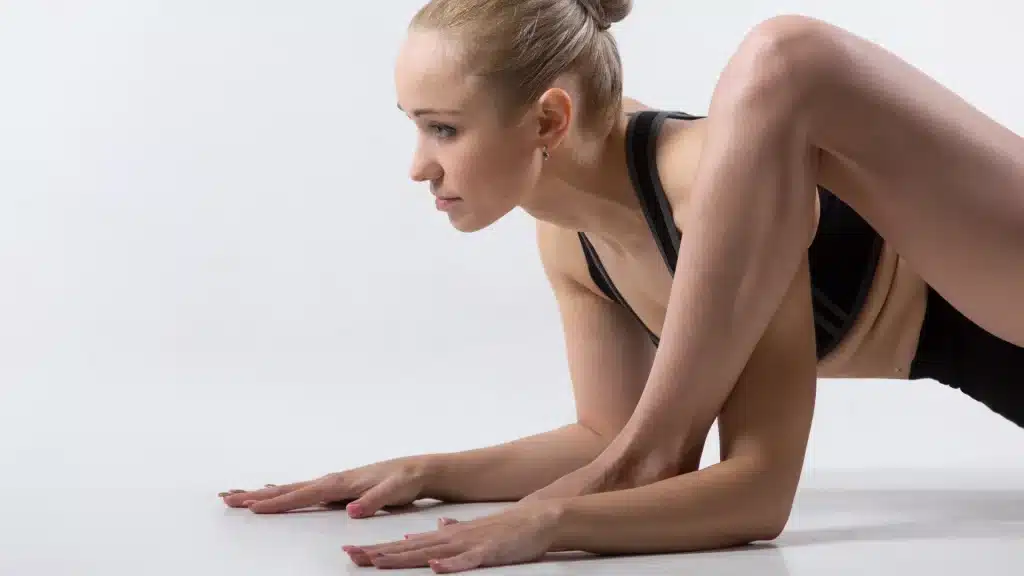
Steps:
- Exhale with every step of your right foot to the outside of your right hand. Make sure your foot comes all the way to the front of your foot so your toes can be in line with your fingers. Your right knee should be at a 90-degree angle and should stacked above your ankle. Also toes should point out about 45 degrees.
- Inhale, bringing elbows to the floor with your forearms flat on your mat. Extend palms down onto the floor (put a block under the forearms if that is helpful).
- Keep your head neutral and relaxed.
- Exhale and press down through your left heel to reach back, extending your left leg more in your seat. This helps prevent your hips from slumping onto the floor.
- Take 5 deep, full breaths.
- When you feel ready to release the pose, breathe out and stretch your arms forward, extending the wrists below your shoulders.
- Breathe in and take a step back into Downward Dog.
- Hold for a few breaths in the starting position.
- Now keep your left leg forward so that you do the pose on both sides.
This pose can feel intense, so move slowly and only go as deep as your body allows. It’s a powerful stretch that helps counteract the effects of sitting for long periods.
Common Mistakes
You need to avoid some common mistakes to make sure that you get the best results. So make sure to take a look at the below-mentioned mistakes :
- Overstretching: It’s tempting to push yourself, but forcing a pose can lead to injury. Listen to your body and ease into the stretch.
- Poor Alignment: Misalignment of hips will put unnecessary pressure on your joints, so use a mirror.
- Holding Your Breath: Remember to breathe. Deep, steady breaths help you relax and improve your stretch.
Staying mindful of these mistakes will help you get the most out of your practice without risking harm. Yoga is different than hip exercises, so make sure to practice it in a separate session.
Takeaways
Yoga is very helpful for strengthening your hip in most cases but not in everyone. If you are suffering from hip pain, make sure you are aware of the origin of your hip pain. Yoga is a great addition to your lifestyle and these poses will help to open your hip joints to their full potential.
FAQs About Yoga for Hip
Will doing yoga completely cure my hip discomfort?
Yoga can significantly reduce hip discomfort caused by muscle tightness or stiffness, but it may not resolve underlying structural or medical issues. Get a free consultation from HipXpert to get all your questions answered.
How often should I do these yoga poses?
For best results, practice these poses 3–4 times a week. If your hips feel particularly tight, even daily practice can be beneficial as long as you listen to your body.
Is yoga safe for those with hip injuries?
In most cases, yoga can be adapted for individuals with hip injuries. However, it’s essential to consult a doctor or physiotherapist first and avoid any poses that cause pain.
What’s the best time of day to stretch the hips?
The best time is when your body feels warm and relaxed. Many people find evening stretches helpful after a long day of sitting or physical activity.
Can yoga help prevent future hip problems?
Yes, regular yoga practice improves hip mobility, strengthens surrounding muscles, and encourages better posture, all of which can reduce the risk of future hip issues.
